How to restrict access to Windows Settings with Folder Guard
Windows Settings is an essential part of Windows user interface that you use to, well, change the settings of Windows 10 or Windows 11 and tweak it to your liking. However, what if you share your Windows computer with someone who you don't want to mess with your finely tuned computing system?
Folder Guard to the rescue! You can use Folder Guard to set up a restriction that would prevent user access to Windows Settings. You, the administrator, would still be able to use Windows Settings when needed, after entering your password to pause the protection performed by Folder Guard. Here is how to do it:
- Run Folder Guard as usual to change its protection settings, select the Restricted view of its window, and press the Restrict a file or a folder link:
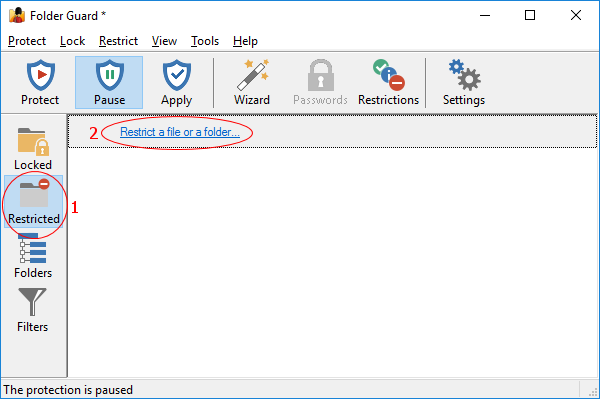
- Press the Browse for folder and select the following folder:
C:\Windows\ImmersiveControlPanel
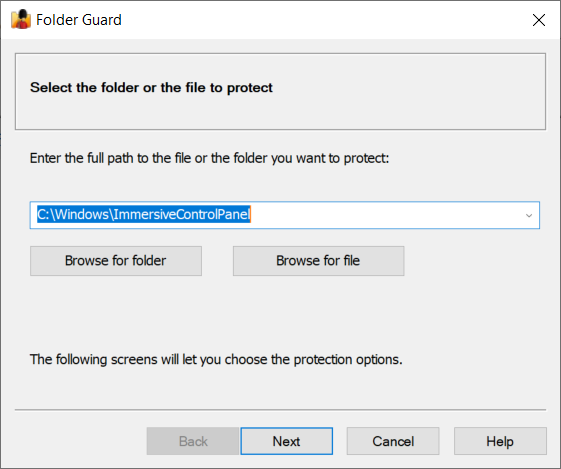
Press Next and on the Visibility Restrictions page leave the visibility default, which means that Folder Guard will not restrict the visibility of this folder. Why? Because for our purposes we don't care if this folder is visible or not, what we want is restrict access to this file, not hide it from the view:
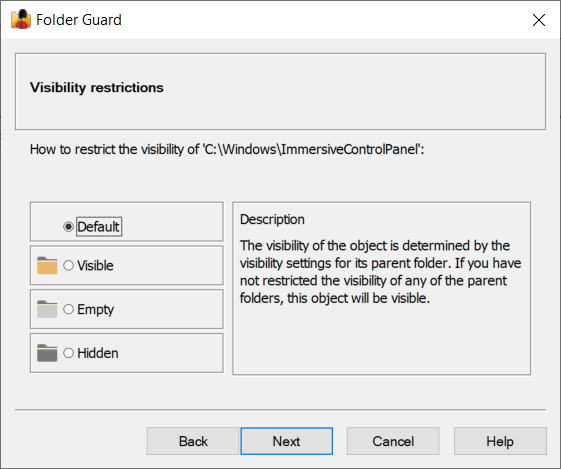
The next page is where we are actually setting up the restriction that will prevent users from accessing Windows Settings. Select the No Access option:
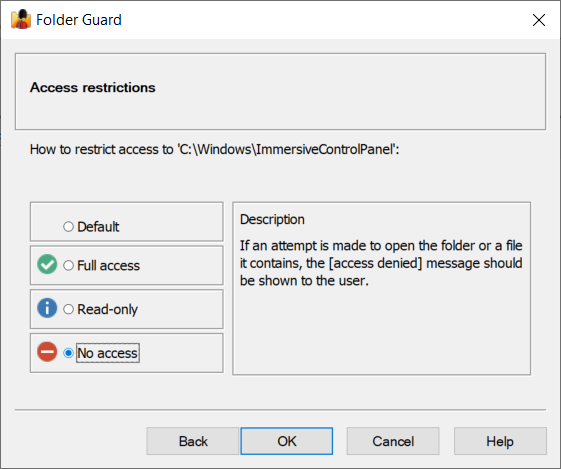
Press OK to close the wizard, and then press the Protect or Apply buttons on the toolbar to make the changes we've made to take effect:
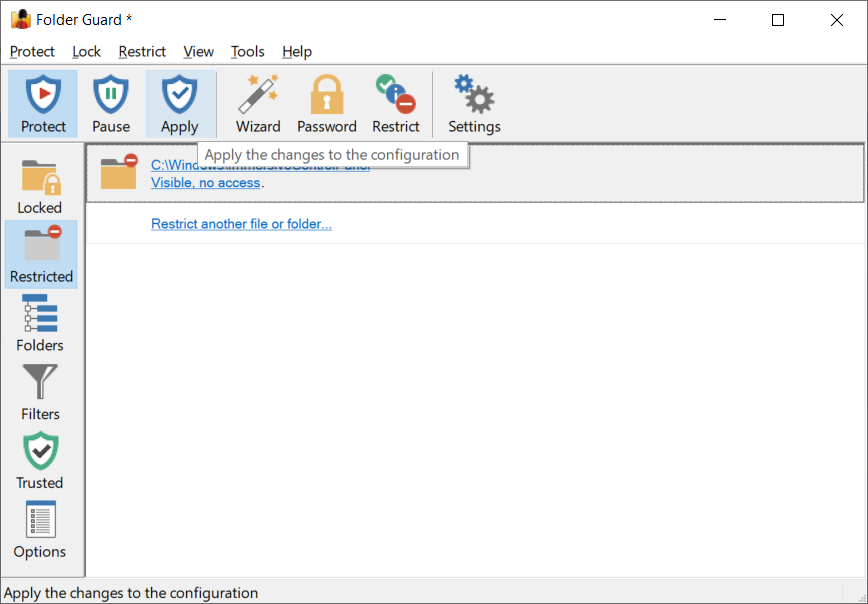
Now you can exit Folder Guard application (confirm that you want the protection to remain in effect after exiting the application).
The last but not least: restart Windows, by pressing the Start button and choosing Power - Restart from the menu. This restart is necessary because Windows might be already using the Windows Settings files, before you've set up the restriction. After the restart, Windows will be forced to reload the files, and our restriction would prevent it from doing that.
After Windows has been restarted, if someone attempts to open Windows Settings, they should only see a blank window flashing for a second or so. Note that not only the Settings command on Start menu will be restricted, but many other related commands as well. For example, if you run File Explorer, right-click on This PC, and select Properties, the command should be restricted. Or if you right-click on the Network icon in the taskbar notification area and select Network and Internet Settings from the menu, it should not open either. And so on!
![]() Password-protect and hide personal files and folders with Folder Guard for Windows 11,10,8,7.
Password-protect and hide personal files and folders with Folder Guard for Windows 11,10,8,7.
User rating: ![]() 4.7 / 5
4.7 / 5
Purchase
or
download a free trial.
Read more...
That should stop other users from using Windows Settings, but what if you, the administrator, need to use it at some point? Just pause the protection (you will be prompted to enter your Master Password of Folder Guard), and that would enable you to use Windows Settings as usual:
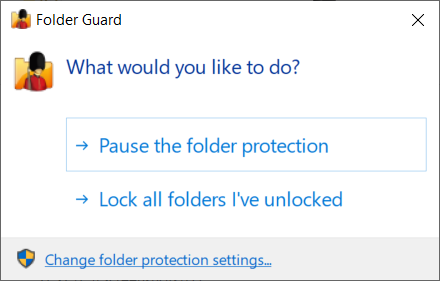
After you are all done with the changes to Windows Settings, resume the protection back. Verify that Windows Settings became restricted again; if not, a Windows restart may be needed.
Happy computing!
Folder Guard User's Guide • Videos • Download • Purchase
If you want to link to this article, you can use this HTML code: <a href="https://www.winability.com/how-to-restrict-access-to-windows-settings-with-folder-guard/">How to restrict access to Windows Settings with Folder Guard</a>
More information
- Encryptability vs Folder Guard: which one to choose?
- What people are saying about Folder Guard...
- How to enable or disable test signing mode in Windows
- Folder Guard videos
- A FREE 30-day license is included
- What's new in the new version
- Folder Guard licenses explained
- End User License Agreement (ELUA)
- Emergency Recovery Utility
- How to lock folders and drives with passwords
- How to hide folders and files
- How to unhide a folder hidden with Folder Guard
- How to create a secret folder in Windows 11 and 10
- How to restrict access to Windows Settings
- How to restrict access to Control Panel
- How to set up Folder Guard to stop downloading from the Internet
- Locking access to the external drives with Folder Guard
- How to make Folder Guard recognize network drives
- Preventing installations of specific programs with Folder Guard
- How to restrict access to Task Manager with Folder Guard
- How to restrict access to Microsoft Store app with Folder Guard.
- How to password-protect a USB flash drive
- Always have a backup of your important files

 Stand with Ukraine
Stand with Ukraine

